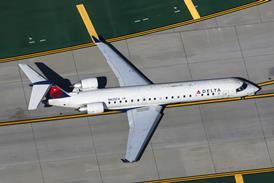KATE SARSFIELD / TARBES, FRANCE
Socata warns of manufacturing industry "extinction" unless EC develops clear policy
EADS Socata is calling on the European Commission to develop a clear policy for light general aviation, warning that Europe's manufacturing industry risks becoming extinct within the next 15 years.
"The political will to develop and promote this important sector of aviation simply isn't there," says EADS Socata senior executive vice- president Jean-Francois Trassard. Citing the financial difficulties of fellow French general aviation aircraft manufacturers Apex Aviation and Reims Aviation, Trassard says: "The lack of intervention [by the EC] is disabling general aviation manufacturing and operations in Europe. We are all fighting for survival in a hostile environment."
Tarbes-based Socata, Europe's largest builder of piston- and turboprop-powered aircraft, urges Europe to mirror the efforts of the US government, which it says, through its funding and promotion of programmes such as NASA's Small Aircraft Transportation System programme, "values the role its industry has to play". Trassard says: "General aviation offers many benefits to Europe's economies in terms of employment, but also to its transportation infrastructure and flight training industry. Eventually the only choice of aircraft [for the consumer] will be a Cessna or a Piper."
One of the principal obstacles facing general aviation in the region, Trassard notes, is its lack of wide public appeal. "It is regarded as elitist, only benefiting a small sector of the community and it is therefore not in politicians' interests to develop and promote its uses," he adds.
The protracted debate in Europe over relaxing single-engine instrument flight rules (SEIFR) for commercial operations serves as an example, Trassard says. "Our industry has been pushing for a change in the rules since 1993 and we are still waiting. In the meantime civil aviation authorities in the USA, Canada, South Africa and Australia have relaxed their SEIFR rules. The European process is too bureaucratic."
Socata is urging changes. Firstly: increased harmonisation between Joint Aviation Authorities member states, where anomalies still exist. "Parts, such as an emergency locator transmitter, still require a different specification, depending on the country of registration," Socata says. It also wants closer harmonisation between the JAA and US Federal Aviation Administration to ease the certification effort. Thirdly, Socata is calling for unified European airspace below 29,000ft (8,845m), which, it says, would ease the flow of operations between member countries.
Finally, Socata wants investment in the development of new general aviation products, to drive technological advances in Europe in avionics, airframe and engine design.
Graham Forbes, chief executive of the UK General Aviation Manufacturers and Traders Association and co-ordinator of the European Council for General Aviation Support, backs Socata's calls.
He says: "Europe needs its own light aircraft industry or we will lose the expertise we have built up over the years. Manufacturers will need financial help to develop new models and breathe new life into existing aircraft. We need to recognise new European diesel powerplant manufacturers."
Source: Flight International























